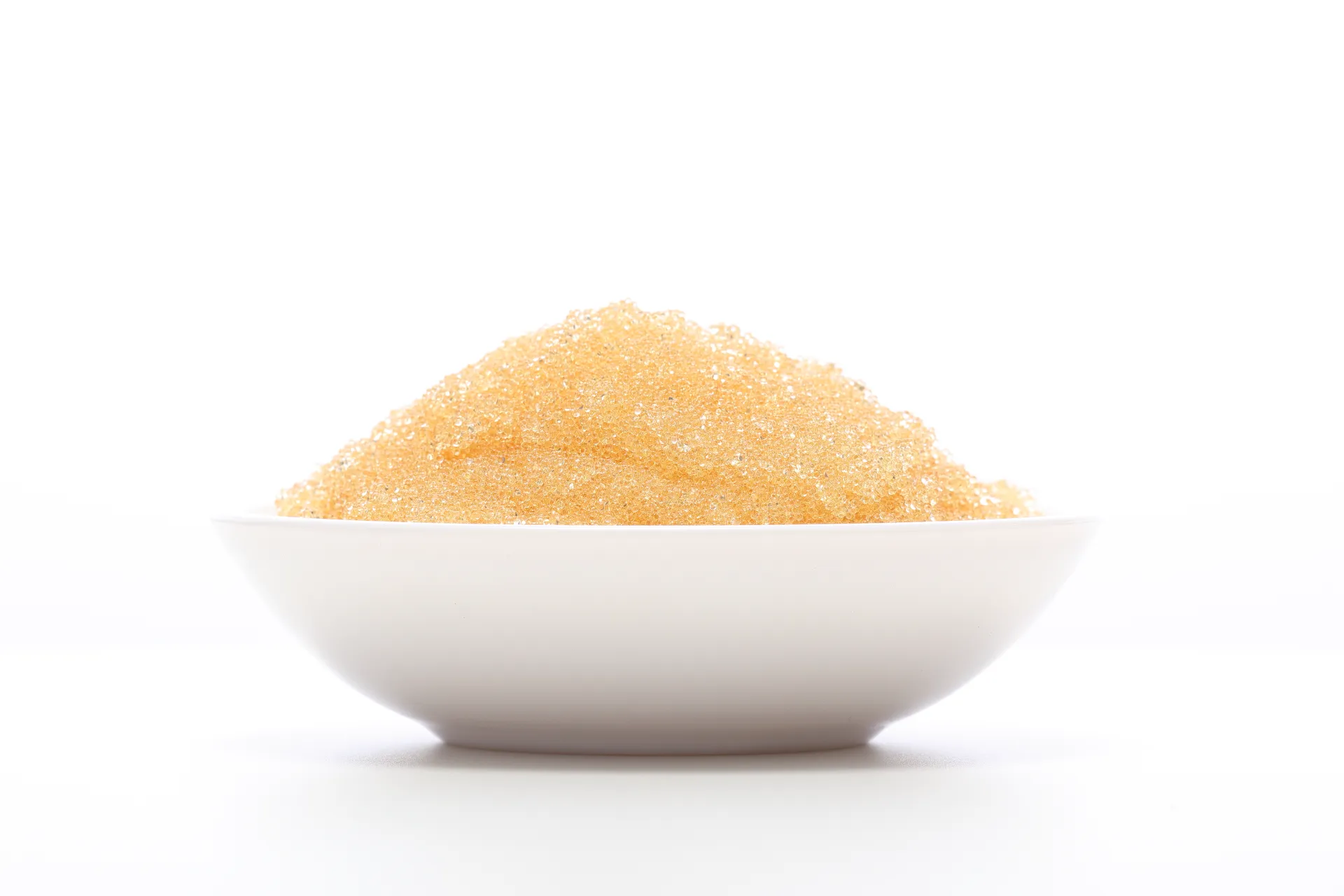If you work around water plants or boilers long enough, you learn that the quiet hero in the pipe rack is ion exchange resin. To be honest, most days it just hums along, no drama. Then a hardness spike hits and—boom—you remember why resin choice matters.

What’s driving the market right now
Three threads keep coming up in my calls with plant managers: tighter discharge limits, energy targets, and fewer operators per shift. That mix favors high-capacity ion exchange resin that regenerates cleanly with less acid, holds up against oxidants, and plays nicely with automation. Anion resins are in the headlines for PFAS, sure, but strong acid cation (SAC) still carries the load for softening and demin in power, food, and electronics.
Product snapshot: Strong Acid Cation Exchange Resin 001X7 FC
From Wei County, Xingtai, Hebei (NO.2 East Jianshe Road, High-Tech Industrial Development South Zone), the 001×7 FC is a gel-type polystyrene–divinylbenzene resin sulfonated to behave—practically speaking—like “solid sulfuric.” It’s purpose-built for water treatment: softening, primary H-cycle demin, and make-up water polishing. Many customers say it’s forgiving on start-up, which matches my field notes.
How it’s made (short version)
Materials: styrene + ≈7% DVB; sulfonation with sulfuric acid; bead polymerization; classification and rinsing. Methods: controlled gel porosity, H+ conditioning, and QC per ASTM D2187 for moisture, capacity, and bead integrity. Service life: typically 3–7 years depending on oxidants (free chlorine is the usual culprit), fouling (iron, organics), and regeneration hygiene.

Typical specifications (real-world use may vary)
| Matrix / Type | Polystyrene-DVB, gel SAC (H+ form) |
| Total exchange capacity | ≈ 1.9–2.2 eq/L (Na+ basis) |
| Moisture content | ≈ 45–50% |
| Bead size (effective) | ≈ 0.6–0.8 mm; UC ≈ 1.6 |
| Shipping weight | ≈ 800 g/L |
| Operating temp | Up to 120°C (Na+); up to 100°C (H+) |
| pH range (service) | 0–14 |
| Regen (typical) | 4–8% HCl or 1–2% H2SO4, 1.5–3 BV, slow/fast rinse |
Where it fits
- Boiler make-up softening and condensate polishing (mixed-bed with anion)
- Two-bed demin prior to EDI in electronics
- Beverage rinse water hardness control
- Municipal and district heating plants targeting scale prevention
Advantages I’ve noticed
Stable capacity, easy classification, and decent osmotic shock tolerance. Surprisingly low fines generation after a rough first backwash—good sign. Pair with dechlorination upstream; SAC and free chlorine don’t get along.
Vendor comparison (selected public specs; ≈ values)
| Resin | Capacity (eq/L) | Bead size | Certs (typical) | Notes |
| 001X7 FC (Hebei, China) | ≈ 1.9–2.2 | 0.6–0.8 mm | ISO 9001 (factory); NSF/ANSI 61 by request | Cost-efficient, solid for softening/demin |
| AmberLite IR120 H (global) | ≈ 1.8–2.0 | 0.6–0.85 mm | NSF/ANSI 61, ISO 9001 | Benchmark SAC for demin |
| Purolite C100E (global) | ≈ 1.9–2.1 | 0.6–0.85 mm | NSF/ANSI 61, ISO 9001 | Widely used in softeners |
Always verify current datasheets and certifications before procurement.
Customization and QC
You can usually spec crosslink (7% is the 001X7 baseline), bead size bands, and preconditioning (H+ vs Na+). Testing per ASTM D2187 (moisture, capacity, attrition), plus pressure drop checks and rinse-to-conductivity targets. For potable use, ask for NSF/ANSI 61 compliance. Food plants often request migration tests and TOC rinse data.

Field notes (fast case snapshots)
- Beverage plant: feed hardness 220 mg/L as CaCO3 → ion exchange resin softener effluent
- Power makeup: two-bed H/OH demin, silica
- Electronics DI: mixed bed polishing to 16–18 MΩ·cm; rinse to prior to service.
Feedback has been consistent: predictable rinse-up, minimal fines after first backwash, and stable pressure drop when backwash rates follow temperature-corrected curves.
Good practices
- Dechlorinate upstream; keep oxidants
- Backwash to 50–70% expansion (temperature corrected) to control fouling.
- Track capacity with ASTM D2187 and keep regen efficiency logs.
Origin: NO.2 East Jianshe Road, High-Tech Industrial Development South Zone, Wei County, Xingtai, Hebei Province, China.
Authoritative references
- ASTM D2187 – Standard Test Methods for Physical and Chemical Properties of Particulate Ion-Exchange Resins. https://www.astm.org/d2187
- NSF/ANSI 61 – Drinking Water System Components. https://www.nsf.org/knowledge-library/nsf-ansi-61-drinking-water-system-components
- WHO Guidelines for Drinking-water Quality. https://www.who.int/publications/i/item/9789241549950
- USP Water Conductivity. https://www.usp.org
- EN 14743 – Water conditioning appliances using ion exchange resin. https://standards.cen.eu
Hebei Lijiang Biotechnology Co., Ltd, is a new material manufacturer specializing in the production of high-performance special ion exchange resins.mixed bed resin suppliers It is a modern high-tech enterprise that integrates the research and development,production, sales, and service of resin materials and resin terminal products.ion exchange resin The company is committed to producing high-quality industrial grade, food grade,pharmaceutical grade, and nuclear grade resins.cation exchange resin It has passed ISO9001 management certification,SGS certification, and WQA international certification from the American Water Quality Association, and has obtained a national food hygiene license. Food grade resin products comply with FDA standards in the United States.super blog